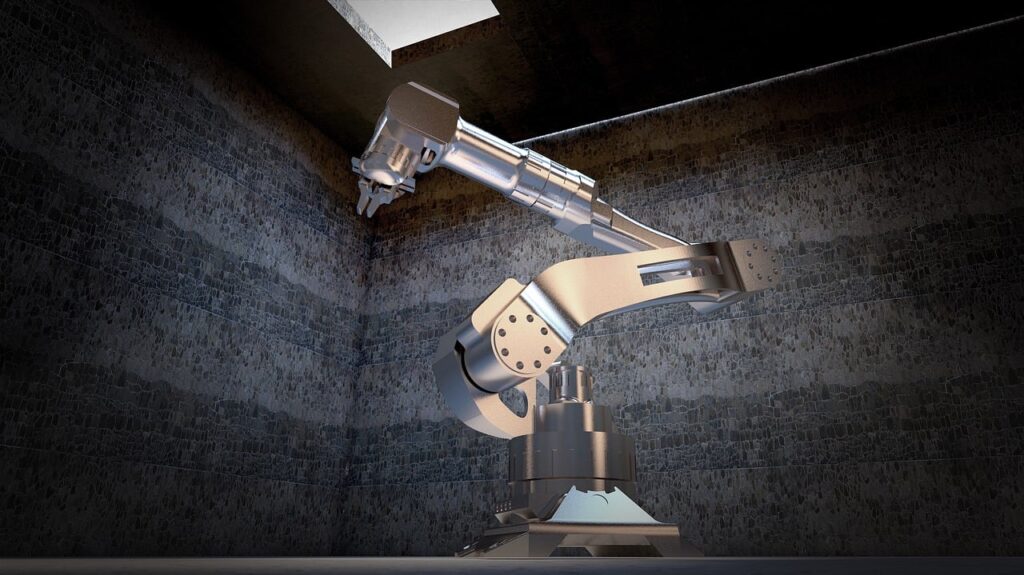Human augmentation is about enhancing our natural abilities using technology. Before you start thinking of superhumans with robotic limbs and computerized brains, let’s clarify it. This isn’t about creating superheroes. Instead, it’s about using technology to improve health, enhance safety, and make daily life more manageable. From brain-controlled prosthetic limbs to wearable devices that boost productivity, human augmentation is already here, impacting our world in profound ways.
What is Human Augmentation Technology?
Human augmentation refers to improving human performance, senses, intelligence, or capabilities beyond what we currently consider normal. It’s a broad concept that encompasses various technologies, all aiming to integrate tech into the human body to boost functionality, health, and quality of life.
On a physical level, augmentation includes prosthetics and implants. Consider cochlear implants that restore hearing, cardiac pacemakers that regulate heart function, or prosthetic limbs controlled by electrodes implanted in nerves or muscles. Each of these innovations serves to bridge the gap between what the body can naturally do and what technology can help it achieve.
Beyond physical enhancements, human augmentation also spans cognitive and sensory improvements. Neurostimulator implants can suppress seizures, while prescription nootropics aim to enhance focus and memory. More futuristic developments like augmented reality glasses and brain-computer interfaces open up a world where technology and the human mind might one day function as one seamless unit.
Types of Human Augmentation
Medical Human Augmentation
Some of the most immediate and transformative effects of human augmentation are happening in the medical field. Advanced prosthetics and implants are revolutionizing the lives of individuals with disabilities and chronic health conditions.
Take, for instance, upper limb prosthetics equipped with muscle-embedded electrodes. These prosthetics can pick up electrical signals from the brain, allowing users to control their prosthetic hand and fingers through thought alone. While still experimental, the fluidity and dexterity regained by some patients is astonishing.
Similarly, cochlear implants provide the deaf with the ability to hear, and retinal implants offer a degree of vision to the blind. Human augmentation, in these cases, restores independence and enhances the quality of life for those who once faced significant limitations.
Technological Enhancements
Human augmentation is not limited to medical use. In industrial and military settings, technological enhancements are making it possible for people to exceed typical human limits safely and efficiently. Robotic exoskeletons, for example, are already in use by companies like Ford and Boeing, allowing workers to lift heavy loads and complete physically demanding tasks with far less strain. These suits amplify strength and endurance, preventing injuries and improving workplace safety.

In more futuristic applications, augmented reality (AR) overlays digital information onto the real world through special glasses, guiding workers through complex manufacturing tasks. Sensory enhancements like infrared goggles expand the range of human vision, offering night vision capabilities that are particularly useful in both industrial and military operations.
Though many of these technologies are still in their early stages, the day when technological augmentation becomes commonplace across multiple industries is fast approaching.
Emerging Augmentation Technologies
Neural implants and exoskeletons are commonly discussed examples of human augmentation, but cutting-edge developments in nanotechnology and bioprinting promise even more revolutionary enhancements. Researchers are developing nanotechnology-based augmentations, like nanobots, to perform repairs inside the human body at the cellular level. These microscopic robots may soon target and repair damaged tissue, monitor vital signs internally, or deliver personalized medications directly to where they are needed, offering a proactive approach to health and wellness.

Bioprinting, the 3D printing of living tissues, is another groundbreaking field that holds promise for the future of human augmentation. Researchers are already working on printing skin for burn victims, but the future might see bioprinted organs that surpass natural ones in efficiency and longevity. Imagine receiving a bioprinted liver that not only performs its natural function but also monitors itself for early signs of disease, sending alerts to a wearable device for preventive care.
These advancements are still in their infancy, but they hint at a future where human augmentation transcends prosthetics and implants, moving toward seamless biological and technological integration.
Cognitive Augmentation
The most speculative but exciting area of human augmentation lies in cognitive enhancement. Researchers are exploring methods to improve memory, learning, focus, and intelligence.
Prescription nootropics, often referred to as “smart drugs,” promise to boost cognitive performance, although their efficacy remains a topic of debate. Neural implants are another frontier, with existing technologies already helping patients with cognitive impairments. These implants could eventually enhance cognitive abilities in healthy people, allowing us to push the boundaries of human intelligence. Brain-computer interfaces (BCI) may one day enable direct communication between the human brain and machines, unlocking the potential for seamless AI-human collaboration.
While much of this remains speculative, the idea of downloading knowledge or controlling devices telepathically is no longer confined to the realms of science fiction. The possibilities here, especially regarding human-AI interaction, are thrilling to contemplate.
Practical Applications vs. Superhuman Fantasies
When people think of human augmentation, they often leap to sci-fi fantasies of superhumans with robotic limbs or enhanced intelligence, much like characters from comics or movies. In reality, most of today’s innovations are focused on practical improvements that enhance day-to-day life. For example, while voice prosthesis restores hearing the voice, they don’t provide superhuman abilities. Exoskeletons in factories help workers avoid injury, but they don’t grant superhuman strength. These technologies are designed to solve real-world problems rather than turn humans into superheroes.
Convergence of Fields
The rapid advancements in human augmentation are being fueled by the convergence of several fields that were once unrelated. Robotics, for instance, plays a pivotal role in creating prosthetics with dexterity and strength. Neuroscience contributes by developing neural sensors that allow people to control these prosthetics using their minds. Additionally, developments in genetics and gene editing, particularly CRISPR, hold the potential for biological enhancements, while nanotechnology promises sensors and drug-delivery systems so small they can operate inside the body without being detected. Artificial intelligence further augments our abilities, providing tools that can think and learn alongside us.
This interdisciplinary collaboration is driving us toward a future where these once-disconnected fields come together to create powerful synergies, opening new doors for human enhancement.
Current Applications of Human Augmentation
Healthcare and Medicine
The healthcare sector has already witnessed some of the most significant advancements in human augmentation. From brain-controlled prosthetics to retinal implants, the integration of technology into medical treatments is transforming lives. Exoskeletons are helping paralysis patients walk again, while telemedicine robots allow doctors to perform surgeries remotely. Virtual and augmented reality tools are also playing a pivotal role, enabling surgeons to perform with greater precision, thereby improving patient outcomes.
Military & Defense
The military is another field driving advancements in human augmentation. Technologies like exoskeletons help soldiers carry heavier loads and reduce fatigue during combat. Augmented reality devices integrated into helmets offer real-time data, helping soldiers navigate complex battlefields with enhanced awareness. Furthermore, performance monitoring devices track vital signs, allowing medics to detect health problems before they escalate, ultimately saving lives.
While controversial, these military technologies often trickle down to benefit society through civilian applications, improving productivity and safety across various industries.
Workplace Integration
In industries such as manufacturing and logistics, companies are starting to adopt basic human augmentation technologies to improve safety and efficiency. Exoskeletons reduce injuries from heavy lifting, while augmented reality systems guide workers through complex tasks with real-time instructions. As more companies recognize the value of these technologies, workplace augmentation will likely become more widespread, enhancing productivity while minimizing risks.
Enhancing Daily Life
Human augmentation isn’t limited to workplaces or hospitals; it’s already making small improvements in our everyday lives. Wearable fitness trackers help us monitor our health by tracking everything from heart rate to sleep patterns. Augmented reality apps like Google Maps overlay digital information on real-world streets, making it easier to navigate unfamiliar places. And “exergaming” platforms like the Nintendo Wii get people moving and exercising in a fun, engaging way.
These lifestyle technologies, though modest, point to a future where human augmentation will play a more significant role in everyday life, potentially embedded in clothing, devices, or even our bodies.
The Future of Human Augmentation
Human augmentation is progressing at an astonishing pace. Though its current applications remain modest, the future holds remarkable possibilities as technology advances. As augmentation becomes mainstream, let’s explore what the future may hold.
Neural Interfaces and Cognitive Enhancement
One of the most exciting prospects in human augmentation is the development of neural interfaces that could revolutionize how we interact with technology. These advancements might enable:
Augmented cognition: Imagine being able to download knowledge directly into your brain or partner with Artificial Intelligence to expand your intelligence. This would fundamentally change the way we learn and solve problems.
Telepathic communication: Brain-to-brain interfaces could allow us to share thoughts, emotions, and even experiences across distances, making communication more direct and intimate.
AI-human symbiosis: By combining human creativity with machine efficiency, we could create a partnership where both entities enhance each other’s strengths, achieving capabilities beyond what either could do alone.
The integration of technology into human cognition could lead to unprecedented growth in intelligence and communication.
Medical Breakthroughs
Advances in medical technology will likely play a major role in human augmentation. Some possible breakthroughs include:
Implanted pharmacies: Imagine having an implant that constantly monitors your health and delivers personalized medication tailored to your body’s needs in real-time. This would shift medicine from reactive treatment to a proactive, highly automated approach.
These innovations could transform healthcare, turning it into a system of personalized and continuous enhancement rather than just treatment.
Augmented Reality and Everyday Life
The rise of augmented reality (AR) is another exciting frontier in human augmentation, with the potential to reshape daily life in countless ways:
Augmented classrooms: With AR, learning could become an on-demand experience. Traditional education may be replaced by instant access to knowledge, allowing students to master subjects more efficiently.
Telepresence avatars: Imagine attending work meetings or visiting loved ones without leaving your home, thanks to robotic avatars or AR projections that simulate your presence in real-time.
Intelligent AR assistants: Always-on AI guides could be integrated into your daily life, helping with everything from remembering important dates to navigating unfamiliar places or even enhancing social interactions.
Benefits of Human Augmentation
The advantages of human augmentation are vast. On a physical level, it can help overcome disabilities, improve strength and endurance, and boost safety in hazardous environments. Sensory expansion, like infrared night vision or augmented reality interfaces, opens new realms of perception. Perhaps most transformative is cognitive augmentation, which could one day enable us to learn faster, remember more, and collaborate seamlessly with AI systems.
Challenges of Human Augmentation
Human augmentation raises significant challenges, particularly ethical concerns about fairness and access, as enhanced technologies may widen social inequalities. High costs also limit availability, making advanced enhancements accessible only to those who can afford them. Additionally, dependency on technology poses risks, as individuals may lose natural abilities and become vulnerable to device failures. Finally, potential health risks, including infections and implant malfunctions, necessitate ongoing monitoring and care. Addressing these challenges is essential to ensure that human augmentation benefits everyone and does not exacerbate existing disparities in society.
Conclusion
The future of human augmentation evokes both apprehension and excitement. People imagine both dystopias of superclass humans and utopias where disease, suffering, and injustice become obsolete relics of history. The truth will likely fall somewhere in the middle.
Thoughtfully applied and ethically implemented, human augmentation technologies hold enormous potential to profoundly expand the human experience and reduce suffering worldwide. But we must be judicious in how these technologies are advanced and made available.
Overall, I am optimistic that human ingenuity will guide us towards an augmented, but still very human future. Our essential nature of curiosity, creativity, and community can endure alongside enhanced abilities and new technological integration. We enter the era of human augmentation with caution but also hope, guided by the highest ethical wisdom of our times.

